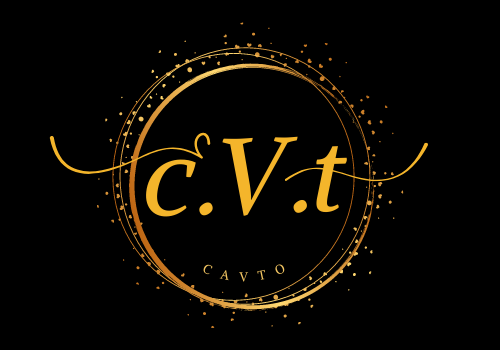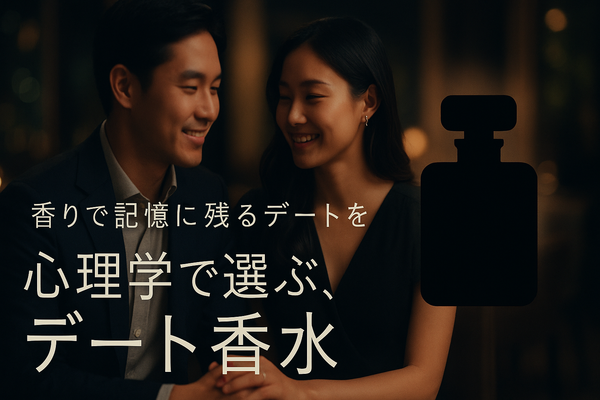Famous Perfumers: People who changed the world of fragrance
Famous Perfumers: People who changed the world of fragrance
In the world of perfumery, there are great perfumers whose artistry and technical skill have transformed eras, making scents that transcend mere products and become cultural phenomenons that continue to captivate millions.
In this article, we explore the lives and work of legendary perfumers who revolutionized the world of perfumery, revealing their passion and creativity and giving you a deeper understanding of modern perfumery.
table of contents
- About the profession of perfumer
- Legendary Classical Perfumers
- An innovative perfumer representing the 20th century
- Contemporary Perfumers to Watch
- The Activities of Female Perfumers
- The work of a perfumer and the creative process
- Summary: The Legacy of Fragrance Artists
About the profession of perfumer
The role of the perfumer
A perfumer is an artist who creates the scent that is the core of a perfume:
-
Artistic Creation
- Expressing emotions and memories through scent
- Unique scent combinations
- Aesthetic sense and technical ability combined
-
scientific knowledge
- Understanding the chemistry of fragrance ingredients
- Mastering perfumery techniques
- Safety and Quality Control
-
Commercial Sense
- Understanding market needs
- Harmony with the brand image
- Anticipating trends
The journey to becoming a perfumer
- Study at a specialized educational institution
- Long-term training at a fragrance company
- Guidance from a Master Perfumer
- Extensive experience and accumulated track record
Legendary Classical Perfumers
Aimé Guerlain (1834-1910)
Life and work
As the son of the founder of the prestigious perfume house Guerlain, which still exists today, Aimé Guerlain revolutionized the world of perfume.
Representative works
-
Jicky (1889)
- The world's first abstract perfume
- Innovative use of synthetic fragrances
- A masterpiece that became the prototype for modern perfumery
-
L'Heure Bleue (1912)
- Expressing the beauty of sunset
- A poetic and sentimental scent
- A timeless fragrance
innovation
- Pioneering use of synthetic fragrances
- Introduction to Abstract Expressions
- Establishing the concept of perfume as a work of art
François Coty (1874-1934)
A revolutionary in the perfume world
Coty is known as the "father of modern perfumery" and brought about major changes in the perfume industry.
Representative works and achievements
-
Rose Jacqueminot (1904)
- Recreates the natural scent of roses
- A memorable commercial success
-
Chypre (1917)
- The creation of a new fragrance family
- An innovative combination of bergamot, oakmoss and patchouli
- The prototype of "chypre" perfume
Impact on the industry
- Promoting the popularization of perfume
- Emphasis on beautiful bottle design
- A pioneer in international brand development
Jacques Guerlain (1874-1963)
The genius of the Guerlain family
Born as the grandson of Aimé Guerlain, he inherited and developed the Guerlain family's perfume-making tradition.
Timeless masterpieces
-
Mitsouko (1919)
- A fragrance born from a longing for Japan
- A masterpiece of the chypres genre
- The culmination of complex and sophisticated perfumery techniques
-
Shalimar (1925)
- Masterpiece of oriental perfume
- A perfect blend of vanilla and bergamot
- A masterpiece on the theme of eternal love
-
Jeu Reviens (1932)
- It means "I'll be back"
- An elegant and sophisticated fragrance
Artistic Pursuit
- Technology that expresses emotions through scent
- Complex and multi-layered aroma construction
- Creating timeless beauty
An innovative perfumer representing the 20th century
Ernest Beaux (1881-1961)
Innovator from Russia
Ernest Beaux is a legendary perfumer who created one of the most famous creations in the history of perfumery.
Representative works
-
Chanel No. 5 (1921)
- The most famous perfumes of the 20th century
- Innovative Uses of Aldehydes
- A masterpiece created in collaboration with Coco Chanel
technological innovation
- Effective use of aldehydes
- Abstract and contemporary scent creation
- Expressing the new era of women
Edmond Roudnitska (1905-1996)
The Philosopher of Perfume
Rudnicka was more than just a perfumer; he was also a thinker who contemplated the artistry of perfumery.
Representative works
-
Diorissimo (1956)
- Creating for Christian Dior
- A perfect reproduction of the Lily of the Valley scent
- Fusion of technology and art
-
Eau Sauvage (1966)
- A revolution in men's fragrances
- Transparency with the use of Hedione
- A pioneer of modern men's fragrance
Art Theory
- Theoretical construction of the artistry of perfume
- Proposal for "Architecture of Fragrance"
- Expressing emotions and memories through scent
Jean Carles (1892-1966)
Great Educator
Karl was not only an excellent perfumer, but also an educator who trained many younger perfumers.
Representative works
-
Miss Dior (1947)
- Expressing hope during the postwar reconstruction period
- Effective use of green notes
- New expression of feminine beauty
Contribution to education
- Coaching the next generation at Roger & Gallé
- Teaching systematic perfumery techniques
- Nurturing many excellent perfumers
Contemporary Perfumers to Watch
Jean-Claude Ellena (1947-)
Masters of Minimalism
Elena is known as the "poet of fragrance" and is known for creating simple yet sophisticated scents.
Representative works
-
Mediterranean Garden (2003)
- Expressing the Mediterranean landscape through scent
- A simple and transparent fragrance
- Hermes masterpiece
-
Garden on the Roof (Un Jardin Sur Le Toit, 2011)
- Urban rooftop garden theme
- A contemporary and sophisticated fragrance
philosophy
- Practicing the "aesthetics of subtraction"
- Pursuit of transparency and lightness
- Emphasis on harmony with nature
Dominique Ropion (1946-)
Fusion of technology and sensibility
Ropion is a representative contemporary perfumer who combines high technical ability with rich sensibility.
Representative works
-
Portrait of a Lady (2010)
- Masterpieces by Frederic Malle
- A modern interpretation of the rose scent
- Intense and striking aroma
-
Guerlain Narcisse Noir (1911 retelling)
- A modern interpretation of a classic
- Proving high technical capabilities
Olivier Polge (1981-)
Young hopeful
Although he is a young perfumer, Polge is already highly regarded and a promising artist.
Representative works
-
Chanel Gabrielle (2017)
- The new face of Chanel
- A fragrance named after Coco Chanel
- A new expression for modern women
The Activities of Female Perfumers
Sophie Labbé (1967-)
Sensitivity unique to women
As a female perfumer, Lavey creates fragrances with her unique sensibility.
Representative works
- Jean Patou Joy (2000 retelling)
- A delicate and feminine fragrance
Daniela Andrier (1963-)
Prada's exclusive perfumer
Andrier works as the exclusive perfumer for the Prada Group.
Representative works
-
Prada Candy (2011)
- A contemporary and sweet fragrance
- Popular perfumes for young women
The work of a perfumer and the creative process
creative process
-
Inspiration
- Inspiration from emotions, memories and experiences
- Influences from nature, art and culture
- Harmony with the brand concept
-
Designing the configuration
- Top, middle and base note planning
- Designing the change in scent over time
- Overall balance adjustment
-
Perfumery work
- Fragrance selection and blending
- Repeated prototyping and adjustments
- Long-term work to complete
Required skills
Sensory abilities
- Excellent sense of smell
- Memory of scent
- Ability to detect subtle differences
technical ability
- Deep knowledge of fragrances
- chemical understanding
- Mastering perfumery techniques
Artistic ability
- Creativity and imagination
- Aesthetic sense
- emotional expressiveness
Japanese Perfumers and Ranjatai
Japan also has excellent perfumers and has developed its own unique fragrance culture:
Characteristics of Japanese Fragrances
- Delicate and elegant expression
- Emphasis on harmony with nature
- Sensitivity to value seasonality
Ranjatai Eau de Parfum Fragrance
Our Ranjatai Eau de Parfum is another example of a modern take on Japanese fragrance tradition:
- Inspiration from the Shosoin fragrant woods
- Fragrances tailored to Japanese sensibilities
- A fusion of tradition and innovation
Learn more about Ranjatai Eau de Parfum
Summary: The Legacy of Fragrance Artists
The legacies left by the great perfumers are the foundations of modern perfume culture:
What perfumers have in common
-
Passion for art
- Perspective on Fragrance as Art
- An insatiable quest for beauty
- Fragrance creation as self-expression
-
Inquisitiveness about technology
- Taking on new technologies and materials
- Inheritance and development of traditional techniques
- Acquisition and application of scientific knowledge
-
Sensitivity to the times
- Responding to social changes
- Understanding people's emotions and values
- Vision for the future
Modern influences
The scents they created were:
- Establishing the artistry of perfume
- Contributing to the development of perfumery techniques
- Promoting the spread and development of perfume culture
- Providing inspiration for future perfumers
Lessons to be Learned
What we can learn from the great perfumers:
- The Importance of Passion and Persistence
- Balancing technology and sensibility
- The value of originality
- Insight into the times
Perfume is not just a product, it is a work of art that contains the perfumer's soul. Thanks to the passion and skill of these great creators, we can enjoy beautiful scents today.
Related articles
- From Ancient Egypt to the Present: The History and Cultural Changes of Perfume - A detailed explanation of the historical background of perfume
- What is the difference between natural and synthetic fragrances ? A detailed explanation of the fragrances used by perfumers





![[Sengoku Fragrance] Ranjatai Eau de Parfum 50ml](http://cavto.jp/cdn/shop/files/MG_1544_e13ac5a9-8c72-4da5-8c41-ac687194c31d_300x300.jpg?v=1744864411)